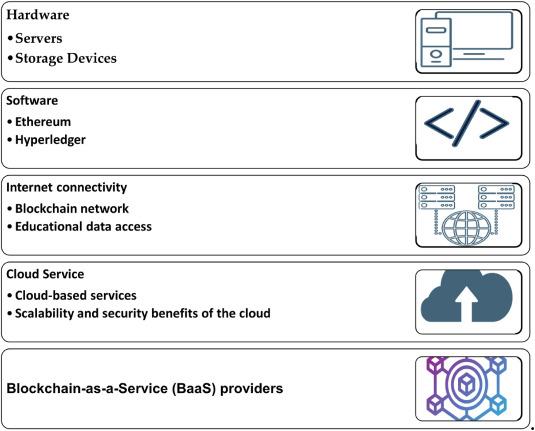How Implementing Blockchain is Revolutionizing Educational Institutions: Benefits & Best Practices
In the digital era, educational institutions face increasing pressure to innovate, secure student data, and verify credentials efficiently. One groundbreaking technology leading this change is blockchain. Through its decentralized ledger system, blockchain offers unprecedented benefits like data security, obvious credentialing, and simplified administration. In this thorough guide, we’ll explore how implementing blockchain is revolutionizing educational institutions, the key benefits, real-world examples, and actionable best practices for a successful blockchain deployment in education.
What is Blockchain and How Does it Apply to Education?
Blockchain is a decentralized digital ledger that securely records transactions across many computers. Its core attributes—immutability, transparency, and decentralization—make it uniquely suited for solving longstanding issues in the educational sector. Here’s how blockchain applies to education:
- Immutable Records: Student data, academic credentials, and certifications remain tamper-proof and verifiable.
- Decentralized Verification: Institutions, employers, and students can access and verify records without intermediaries.
- Smart Contracts: Automate administrative tasks, eligibility checks, and scholarship disbursements.
- Innovation in Learning: Enables new educational models like micro-credentials and lifelong learning portfolios.
5 Key Benefits of Blockchain in Educational Institutions
The adoption of blockchain technology in education goes beyond buzzwords; it provides concrete advantages that address current pain points in the sector:
-
Enhanced Data Security
Blockchain’s cryptographic foundations ensure that students’ records,transcripts,and certifications are stored securely and cannot be altered or forged.
-
Seamless Credential Verification
With blockchain implementations, verifying academic credentials becomes instantaneous and transparent, streamlining admissions and employment processes.
-
Administrative Efficiency
Manual paperwork and time-consuming verifications are replaced with automated processes and smart contracts, freeing up resources for more value-added tasks.
-
Fraud Prevention
Blockchain’s inherent transparency makes it nearly impossible to counterfeit diplomas and transcripts,helping to combat academic fraud.
-
Student Empowerment
With self-sovereign digital identities, students have greater control over their learning records, promoting mobility and lifelong learning opportunities.
Real-World Applications: Blockchain Case Studies in Education
Forward-thinking educational institutions worldwide are already leveraging blockchain to transform their operations. Here are some notable examples:
MIT’s Digital Diploma Initiative
The Massachusetts Institute of Technology (MIT) launched a blockchain-based digital diploma program, enabling graduates to receive verifiable, tamper-proof digital credentials. This innovation drastically reduced verification time for employers and graduate programs from weeks to seconds.
University of Nicosia’s Blockchain Degrees
The University of Nicosia, Cyprus, became a global trailblazer by issuing academic certificates on a public blockchain. Not only do students and third parties benefit from instant verification, but the university also leads open source efforts for blockchain adoption in education.
Sony Global Education Platform
Sony, in partnership with several universities, developed a blockchain-based platform for the secure sharing and management of course records and grades. This solution enhanced data interoperability among partnered institutions and allowed global student mobility.
Best Practices for Implementing Blockchain in Educational Institutions
implementing blockchain in education is a strategic initiative. Institutions should focus on best practices to maximize benefits while ensuring a smooth transition:
-
Assess Needs and Define objectives:
Identify clear use cases such as diploma issuance, student identity management, or record keeping. Start with pilot projects to test blockchain solutions at a manageable scale.
-
Engage Key Stakeholders:
Involve faculty, IT staff, administrators, and students. Stakeholder input is crucial for successful adoption and user acceptance.
-
Choose the Right Blockchain Platform:
Evaluate options (public vs. private blockchains) based on security, scalability, interoperability, and compliance with data privacy regulations like GDPR.
-
Focus on Data Privacy and Compliance:
Implement privacy-preserving techniques and ensure compliance with international and local data protection laws.
-
Offer Training and Ongoing Support:
Provide practical training for staff and stakeholders to build confidence and competence in using blockchain solutions.
-
Monitor, Iterate, and Scale:
Gather feedback, monitor performance, and iteratively improve the system before scaling institution-wide.
Potential Challenges and Solutions
While the benefits are compelling, implementing blockchain in education is not without challenges. Awareness of these hurdles and proactive planning are keys to success:
- Scalability Issues: Start with modular solutions and partner with experienced technology providers to ensure systems can grow as needs evolve.
- Integration with Existing Systems: Use APIs and middleware to ensure seamless data flows between new blockchain systems and legacy databases.
- Lack of Technical Expertise: Invest in partnerships, training, and hiring to build internal blockchain knowledge.
- Regulatory Uncertainties: Consult with legal experts and stay updated with changing data protection and education regulations.
First-Hand Experiences: Voices from the Field
Educators, students, and administrators who have engaged with blockchain-powered solutions frequently enough report significant improvements:
“As an admissions officer, I used to spend hours verifying international transcripts. With blockchain certificates, the process is almost instant and error-free.”
— Sarah K.,University Registrar
“Transferring my academic credits between institutions was always stressful. Now, with blockchain records, I maintain full control over what I share and when.”
— Arjun N., Graduate student
Future Trends: what’s Next for Blockchain in education?
Looking ahead, blockchain adoption in educational institutions is expected to accelerate, spurred by global digital transformation initiatives and increasing student mobility.Key trends to watch include:
- expansion of interoperable global credential networks.
- Rise of decentralized identity management for learners.
- Integration of smart contracts for scholarships and course enrollments.
- Growth of micro-credentials and digital badges for lifelong learning.
Educational leaders who invest in blockchain today are positioning their institutions at the forefront of future-ready learning ecosystems.
Conclusion
Blockchain technology is quickly becoming a cornerstone of digital transformation in education.Its ability to enhance security, streamline processes, and empower both students and educators makes it a powerful agent of change. By understanding the benefits, learning from successful case studies, and following best practices for implementation, educational institutions can harness blockchain’s full potential to create a more secure, efficient, and learner-centered future.
Are you ready to explore how blockchain can revolutionize yoru institution? Start today and redefine the possibilities in education.

